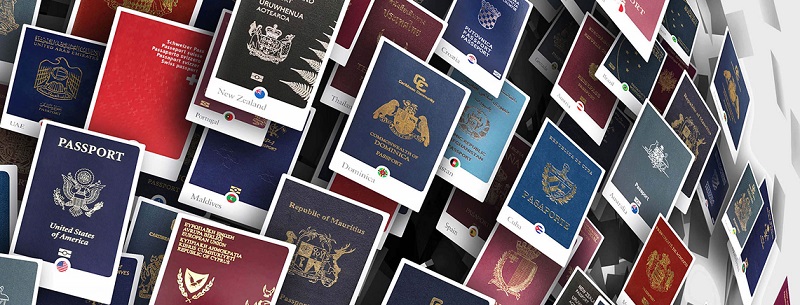
The History of Passport
One of the earliest known references to paperwork that served in a role similar to that of a passport is found in the Hebrew Bible. Nehemiah 2:7–9, dating from approximately 450 BC, states that Nehemiah, an official serving King Artaxerxes I of Persia, asked permission to travel to Judea; the king granted leave and gave him a letter "to the governors beyond the river" requesting safe passage for him as he traveled through their lands.
Arthashastra (c. 3rd century BCE) make mentions of passes issued at the rate of one masha per pass to enter and exit the country. Chapter 34 of the Second Book of Arthashastra concerns with the duties of the Mudrādhyakṣa (lit. 'Superintendent of Seals') who must issue sealed passes before a person could enter or leave the countryside.
Chinese Bureaucracy and Passport
Passports were an important part of the Chinese bureaucracy as early as the Western Han (202 BCE-220 CE), if not in the Qin Dynasty. They required such details as age, height, and bodily features. These passports (zhuan) determined a person's ability to move throughout imperial counties and through points of control. Even children needed passports, but those of one year or less who were in their mother's care may not have needed them
Islamic Caliphate
In the medieval Islamic Caliphate, a form of passport was the bara'a, a receipt for taxes paid. Only people who paid their zakah (for Muslims) or jizya (for dhimmis) taxes were permitted to travel to different regions of the Caliphate; thus, the bara'a receipt was a "basic passport."
Etymological sources show that the term "passport" is from a medieval document that was required in order to pass through the gate (or "porte") of a city wall or to pass through a territory. In medieval Europe, such documents were issued to foreign travellers by local authorities (as opposed to local citizens, as is the modern practice) and generally contained a list of towns and cities the document holder was permitted to enter or pass through. On the whole, documents were not required for travel to sea ports, which were considered open trading points, but documents were required to travel inland from sea ports.
King Henry V of England
King Henry V of England is credited with having invented what some consider the first passport in the modern sense, as a means of helping his subjects prove who they were in foreign lands. The earliest reference to these documents is found in a 1414 Act of Parliament. In 1540, granting travel documents in England became a role of the Privy Council of England, and it was around this time that the term "passport" was used. In 1794, issuing British passports became the job of the Office of the Secretary of State. The 1548 Imperial Diet of Augsburg required the public to hold imperial documents for travel, at the risk of permanent exile.
Europe and History of Passport
A rapid expansion of railway infrastructure and wealth in Europe beginning in the mid-nineteenth century led to large increases in the volume of international travel and a consequent unique dilution of the passport system for approximately thirty years prior to World War I. The speed of trains, as well as the number of passengers that crossed multiple borders, made enforcement of passport laws difficult. The general reaction was the relaxation of passport requirements. In the later part of the nineteenth century and up to World War I, passports were not required, on the whole, for travel within Europe, and crossing a border was a relatively straightforward procedure. Consequently, comparatively few people held passports.
During World War I, European governments introduced border passport requirements for security reasons, and to control the emigration of people with useful skills. These controls remained in place after the war, becoming a standard, though controversial, procedure. British tourists of the 1920s complained, especially about attached photographs and physical descriptions, which they considered led to a "nasty dehumanisation". The British Nationality and Status of Aliens Act was passed in 1914, clearly defining the notions of citizenship and creating a booklet form of the passport.
In 1920, the League of Nations held a conference on passports, the Paris Conference on Passports & Customs Formalities and Through Tickets. Passport guidelines and a general booklet design resulted from the conference, which was followed up by conferences in 1926 and 1927.
United Nations travel conferenceWhile the United Nations held a travel conference in 1963, no passport guidelines resulted from it. Passport standardization came about in 1980, under the auspices of the International Civil Aviation Organization (ICAO). ICAO standards include those for machine-readable passports. Such passports have an area where some of the information otherwise written in textual form is written as strings of alphanumeric characters, printed in a manner suitable for optical character recognition. This enables border controllers and other law enforcement agents to process these passports more quickly, without having to input the information manually into a computer. ICAO publishes Doc 9303 Machine Readable Travel Documents, the technical standard for machine-readable passports. A more recent standard is for biometric passports. These contain biometrics to authenticate the identity of travellers. The passport's critical information is stored on a tiny RFID computer chip, much like information stored on smartcards. Like some smartcards, the passport booklet design calls for an embedded contactless chip that is able to hold digital signature data to ensure the integrity of the passport and the biometric data.






 |
|  |
|  |
|  |
| 